Last updated: December 10, 2018
Article
Fourth National Climate Assessment
Note: This article presents verbatim, but abridged, content from the report. For more information and references, please go to the full report.
Marine Ecosystems
Alaska’s marine fish and wildlife habitats, species distributions, and food webs, all of which are important to Alaska’s residents, are increasingly affected by retreating and thinning arctic summer sea ice, increasing temperatures, and ocean acidification. Continued warming will accelerate related ecosystem alterations in ways that are difficult to predict, making adaptation more challenging.
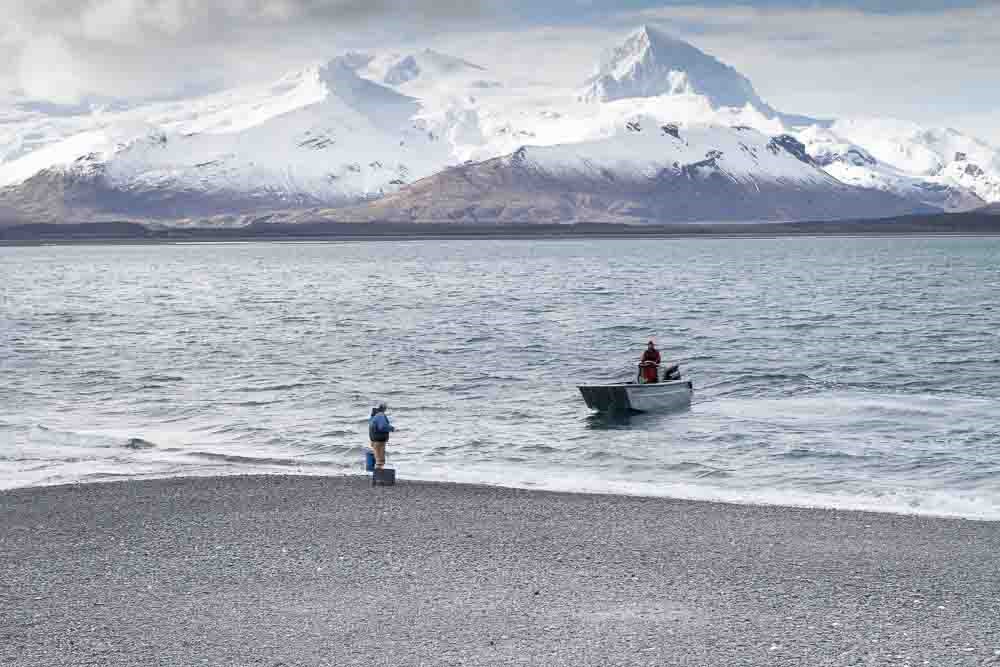
NPS/James Walton
Arctic sea ice—its presence or absence and year-to-year changes in extent, duration, and thickness—in conjunction with increasing ocean temperatures and ocean acidification, affects a number of marine ecosystems and their inhabitants, including marine mammals, the distribution of marine Alaska fish and their food sources.
Arctic Sea Ice Continues to Change
Since the early 1980s, annual average arctic sea ice extent has decreased between 3.5% and 4.1% per decade; September sea ice extent, which is the annual minimum extent, has decreased between 10.7% and 15.9% per decade. As the climate continues to warm, it is likely that there will be a sea ice-free Arctic during the summer within this century.
Sea ice provides an important surface for algal production and growth in marine ecosystems during spring. This production beneath the sea ice is an important source of carbon for pelagic (mid- to upper-water column) grazers, such as copepods and krill, and for benthic (lower-water) detritivores, such as clams and worms that feed on dead, organic material. In turn, the abundance of these animals provides food for higher trophic-level organisms such as fish, birds, and mammals in regional marine ecosystems. The presence or absence of sea ice affects the transfer of heat, water temperature, and nutrient transport, as well as other processes that affect ecosystem productivity.
Ocean Acidification
The oceans are becoming more acidic (known as ocean acidification) in an emerging global problem that will intensify with continued carbon dioxide (CO2) emissions. Changes in ocean chemistry and increased corrosiveness are exacerbated by sea ice melt, respiration of organic matter, upwelling, and glacial runoff and riverine inputs, thus making the high-latitude North Pacific and the western Arctic Ocean (and especially the continental shelves of the Bering, Chukchi, and Beaufort Seas) particularly vulnerable to the effects of ocean acidification. Through lab experiments, ocean acidification has been shown to affect the growth, survival, sensory abilities, and behavior of some species, especially species of importance to Alaska, such as Tanner and red king crab and pink salmon.
Alaska Fishes
More than 600 fish species have been found in Alaska waters, and Alaska’s industrial fisheries in the Gulf of Alaska and Bering Sea are among the most productive and valuable in the world, with an estimated average of $5.9 billion of total economic activity in 2013–2014 (in 2013–2014 dollars).
The distribution of many ocean fish species is shifting northward as the ranges of warmer-water species expand and colder-water species contract in response to rising ocean temperatures, with the confirmed presence of 20 new species and 59 range changes in the last 15 years in the Chukchi and Beaufort Seas. In the Bering Sea, Alaska pollock, snow crab, and Pacific halibut have generally shifted away from the coast and farther from shore since the early 1980s. These changes reflect possible northward shifts in species distributions, particularly in the Bering Strait region.
Marine ecosystem food webs are also being affected by climate change. Changes in sea ice cover and transport of warmer seawater and drifting organisms (such as plankton, bacteria, and marine algae) may be impacting how surface ocean waters interact with the bottom ocean waters, especially over the shallow northern Bering and Chukchi Sea shelves.
Terrestrial Processes
Alaska residents, communities, and their infrastructure continue to be affected by permafrost thaw, coastal and river erosion, increasing wildfire, and glacier melt. These changes are expected to continue into the future with increasing temperatures, which would directly impact how and where many Alaskans will live.
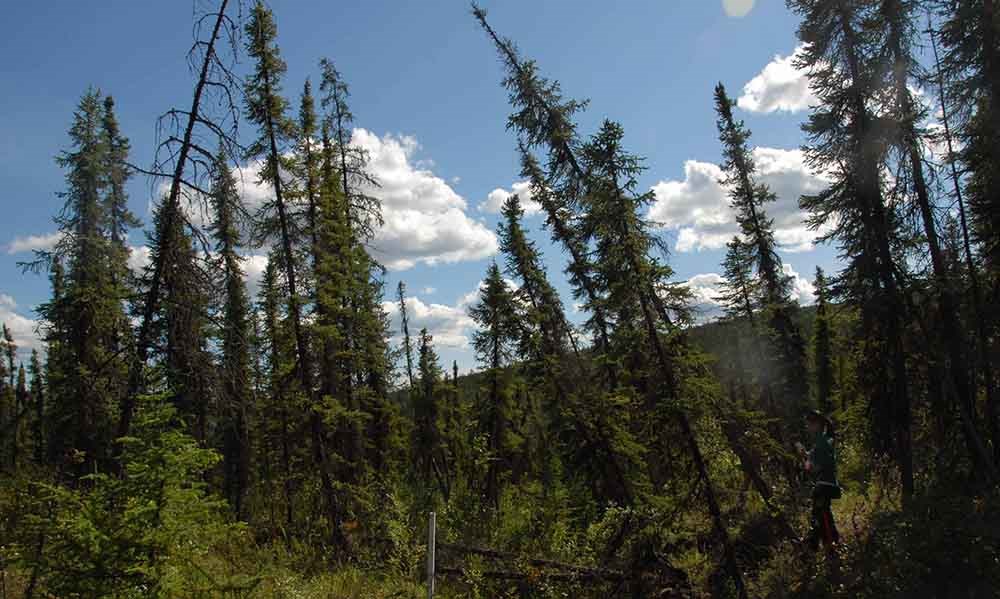
As temperatures increase across the Alaska landscape, physical and biological changes are also occurring throughout Alaska’s terrestrial ecosystems. Degradation of permafrost (soil at or below the freezing point of water [32°F] for two or more years) is expected to continue, with associated impacts to infrastructure, river and stream discharge, water quality, and fish and wildlife habitat. Wildfires and temperature increases have caused changes in forest types from coniferous to deciduous in interior Alaska, and these changes are projected to continue with increased future warming and fire. In tundra ecosystems, temperature increases have allowed an increase of shrub-dominated lands. With the late-summer sea ice edge located farther north than it used to be, storms produce larger waves and cause more coastal erosion. In addition, ice that does form is very thin and easily broken up, giving waves more access to the coastline. A significant increase in the number of coastal erosion events has been observed as the protective sea ice embankment is no longer present during the fall months. In addition, glaciers continue to diminish, and associated runoff influences other terrestrial ecosystems.
Permafrost
About half of Alaska is underlain by permafrost—an essential geographic quality that affects landscape patterns and processes, and construction in the Arctic depends on the ability of permafrost to remain frozen. Since the 1970s, Arctic and boreal regions in Alaska have experienced rapid rates of warming and thawing of permafrost, with spatial modeling projecting that near-surface permafrost will likely disappear on 16% to 24% of the landscape by the end of the 21st century. Confidence in these estimates is higher than for those in the Third National Climate Assessment due to more field sample sites, higher resolution imagery for mapping, and advanced geographic modeling techniques.
Permafrost degradation impacts society in both tangible and intangible ways. Physical impacts of thawing permafrost include unsafe food storage and preservation, decreased bearing capacities of building and pipeline foundations, damage to road surfaces, deterioration of reservoirs and impoundments that rely on permafrost for wastewater containment, reduced operation of ice and snow roads in winter, and damage to linear infrastructure (such as roads and power lines) from landslides. As permafrost thaws, the ground sinks (known as subsidence), causing damage to buildings, roads, and other infrastructure; these impacts to structures and facilities are likely to increase in the future. In addition to physical impacts, thawing permafrost has important societal impacts that cannot be quantified. The loss of cultural heritage for Alaska’s Indigenous people includes the loss of archaeological sites, structures, and objects, as well as traditional cultural properties, which affects their ability to connect to their ancestors and their past.
Wildfire
The annual area burned by wildfires in Alaska varies greatly year-to-year, but the frequency of big fire years (larger than 2 million acres) has been increasing—with three out of the top four fire years (in terms of acres burned) in Alaska occurring since the year 2000. As a result, the vegetation of forested interior Alaska now has less acreage of older spruce forest and more of post-fire early successional vegetation, birch, and aspen than it did prior to 1990. This change favors shrub-adapted wildlife species such as moose, but also destroys the slow-growing lichens and associated high-quality winter range that caribou prefer, though the effects of fire-driven habitat changes to caribou population dynamics are uncertain. Shrub-adapted wildlife species such as moose and snowshoe hares, and in some cases beaver, have followed the expansion of shrubs and are now common in parts of Arctic Alaska and Canada, where they were previously rare or absent. The area burned by wildfires may increase further under a warming climate.
Coastal and River Erosion
Flooding of river areas and coastal erosion affect over 87% of the Alaska Native communities, with some coastal areas being threatened due to changes in sea ice and increased storm intensity as a result ofclimate change. Offshore and landfast sea ice is forming later in the season, which allows coastal storm waves to build while leaving beaches unprotected from wave action. Rates of erosion vary throughout the state, with the highest rates measured on the Arctic coastline at more than 59 feet per year.
In both coastal and river communities, various types of infrastructure and cultural resources are being threatened. A number of adaptation measures are being pursued or proposed that include relocation, the construction of rock walls, the use of sandbags, and the placement of various forms of riprap, which may only slow or displace the erosion process and in some cases be maladaptive.
Glacier Change
Glaciers continue to melt in Alaska, with an estimated loss of 75 ± 11 gigatons (Gt) of ice volume per year from 1994 to 2013, 70% of which is coming from land-terminating glaciers; this rate is nearly double the 1962–2006 rate. Several new modeling studies suggest that the measured rates of Alaska ice loss are likely to increase in coming decades, with the potential to alter streamflow along the Gulf of Alaska and to change Gulf of Alaska nearshore food webs.
Melting glaciers are likely to produce uncertainties for hydrologic power generation, which is an important resource in Alaska. In the short term, melting glaciers can increase hydropower capacity by increasing downstream flow; however, with continued melting there will likely be less meltwater for the future. This may be offset by an increase in precipitation in Alaska, although an increase in precipitation does not necessarily lead to increases in catchment runoff.
Human Health
A warming climate brings a wide range of human health threats to Alaskans, including increased injuries, smoke inhalation, damage to vital water and sanitation systems, decreased food and water security, and new infectious diseases. The threats are greatest for rural residents, especially those who face increased risk of storm damage and flooding, loss of vital food sources, disrupted traditional practices, or relocation. Implementing adaptation strategies would reduce the physical, social, and psychological harm likely to occur under a warming climate.
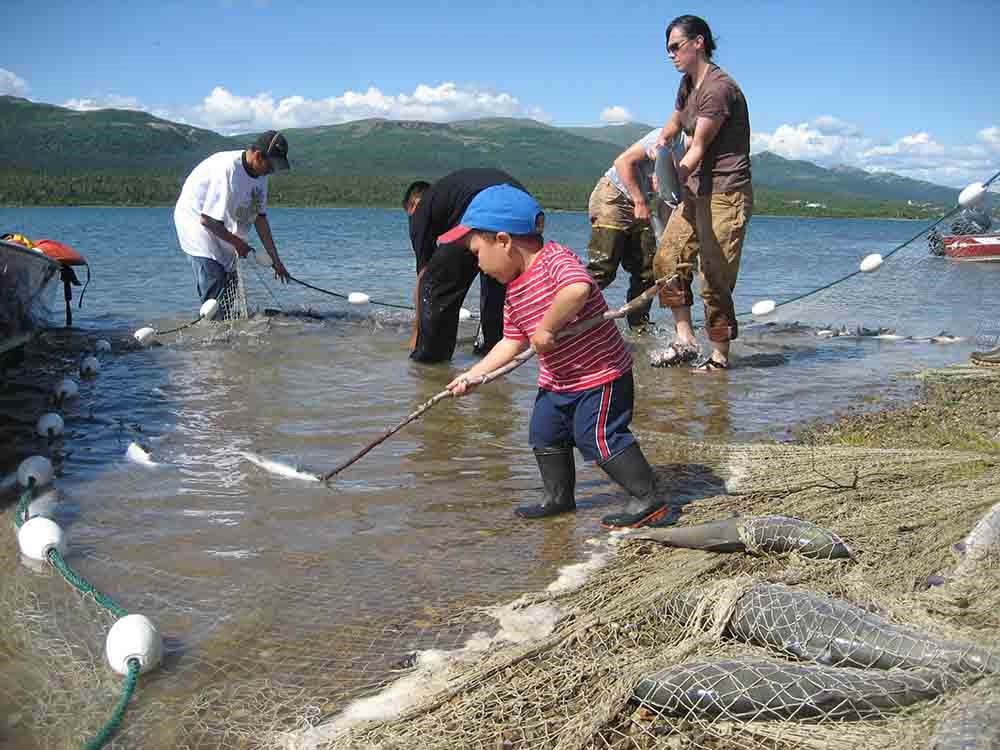
The influence of climate change on human health in Alaska can be traced to three sources: direct exposures, indirect effects, and social or psychological disruption. Each of these will have different manifestations for Alaskans when compared to residents elsewhere in the United States.
Direct Exposures
In general, even with a warming climate, Alaska is not expected to experience the extremes of heat and humidity found at lower latitudes; however, rising temperatures do pose different risks.
Winter travel has long been a key feature of subsistence food gathering activities for rural Alaska communities. Higher winter temperatures and shorter durations of ice seasons may delay or disrupt usual patterns of ice formation on rivers, lakes, and the ocean. For hunters and other travelers, this increases the risk of falling through the ice, having unplanned trip extensions, or attempting dangerous routes, leading to exposure injury, deaths, or drowning.
Indirect Effects
Climate change has indirect effects on human health in Alaska through changes to water, air, and soil and through ecosystem changes affecting the range and concentration of disease-spreading animals and food security, especially in rural communities. These impacts are site specific.
Psychological and Social Effects
Climate change is a common concern among Alaskans and is associated with feelings of depression and uncertainty about the potential changes to communities, subsistence foods, culture, and traditional knowledge and the potential of relocation from long-established traditional sites. These uncertainties and threats have effects on mental health and on family and community relationships and may lead to unhealthy responses such as substance abuse and self-harm.
Indigenous Peoples
The subsistence activities, culture, health, and infrastructure of Alaska’s Indigenous peoples and communities are subject to a variety of impacts, many of which are expected to increase in the future. Flexible, community-driven adaptation strategies would lessen these impacts by ensuring that climate risks are considered in the full context of the existing sociocultural systems.
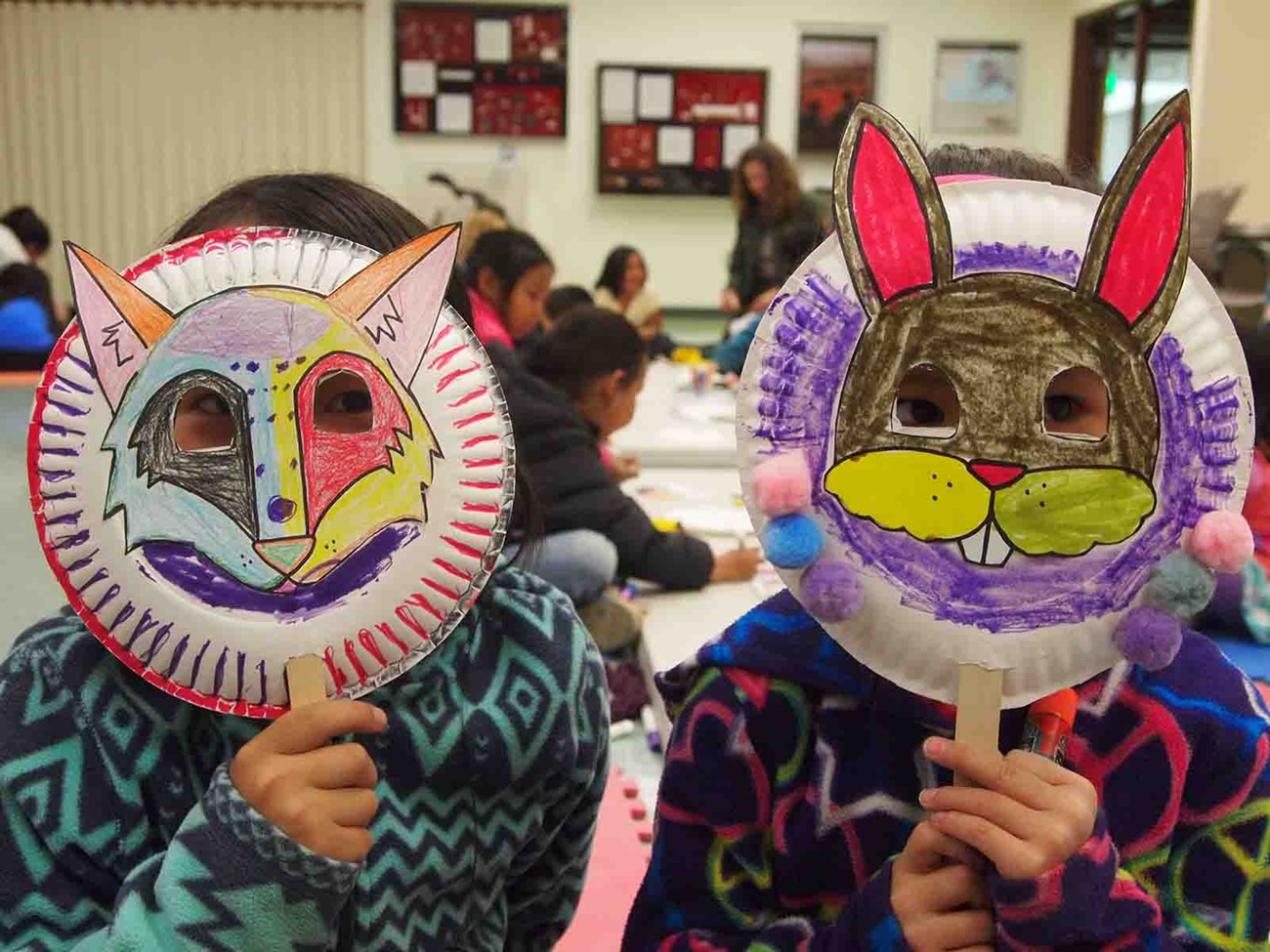
Alaska’s climate is changing rapidly, with far-reaching effects throughout the state, including in its Indigenous communities. Alaska’s rural communities are predominantly inhabited by Indigenous peoples, with some of them disproportionately vulnerable to socioeconomic and environmental change; however, they also have rich cultural traditions of resilience and adaptation. The impacts of climate change are likely to affect all aspects of Alaska Native societies, from nutrition, infrastructure, economics, and health consequences to language, education, and the communities themselves.
Subsistence Activities
Subsistence hunting, fishing, and gathering provide hundreds of pounds of food per person per year in many Alaska Native villages. Producing, preparing, sharing, and consuming these foods provide a wealth of nutritional, spiritual, cultural, social, and economic benefits. Traditional foods are widely shared within and between communities and are a way of strengthening social ties. Climate change is altering the physical setting in which these subsistence activities are conducted. Increasing temperatures affect animal distribution and can alter the availability of subsistence resources, often making hunting and fishing harder.
Economic Costs
Climate warming is causing damage to infrastructure that will be costly to repair or replace, especially in remote Alaska. It is also reducing heating costs throughout the state. These effects are very likely to grow with continued warming. Timely repair and maintenance of infrastructure can reduce the damages and avoid some of these added costs.
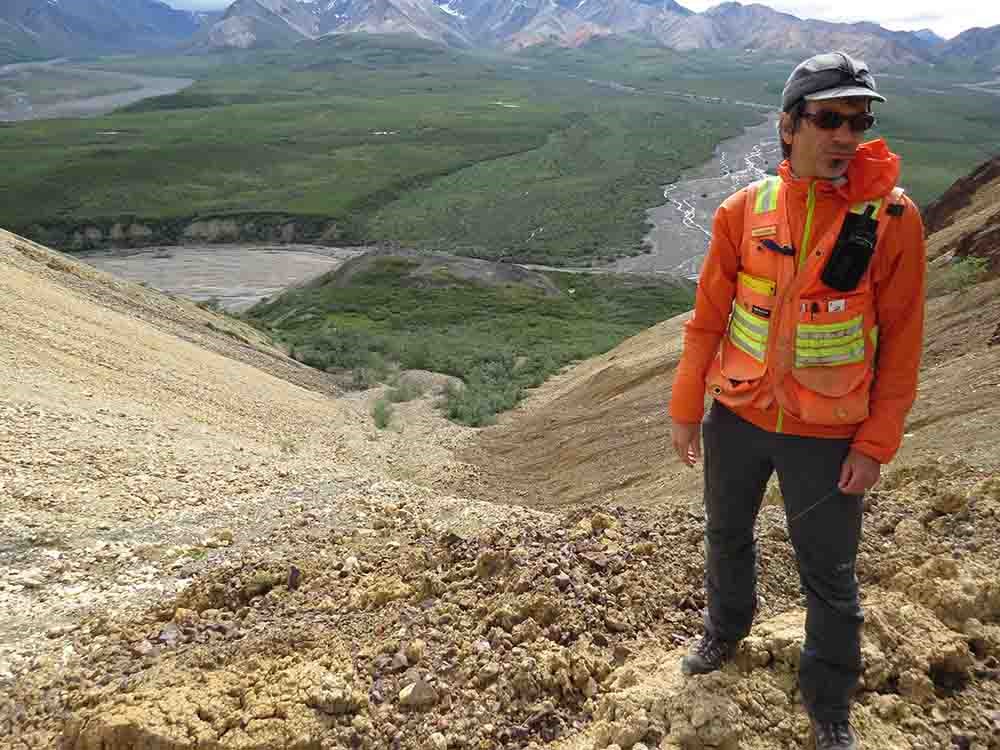
Climate change in Alaska has caused regionally disparate economic effects. The infrastructure and community relocation costs, along with potential adverse effects on fisheries, accrue predominantly to rural communities. While both urban and rural communities benefit from reduced space heating costs, the urban communities bear few of the costs and risks. The profound and diverse climate-driven changes in Alaska’s physical environment and ecosystems generate economic impacts through their effects on environmental services. These services include positive benefits directly from ecosystems (for example, food, water, and other resources), as well as services provided directly from the physical environment (for example, temperature moderation, stable ground for supporting infrastructure, and smooth surface for overland transportation). Some of these effects are relatively assured and in some cases are already occurring. Other impacts are highly uncertain, due to their dependence on the structure of global and regional economies and future human alterations to the environment decades into the future, but they could be large.
Infrastructure
A study published in 2008 projected that the cost (for 2008–2030) associated with early reconstruction and replacement of public infrastructure (roads, public buildings, airports, and rail lines) caused by damage from climate threats (rising sea levels, thawing permafrost, reduced sea ice, and fall storms) was estimated to be between $3.6 and $6.1 billion (in 2008 dollars). Assuming the 2.85% annual real interest rate used in these studies, the cost translates to an average of $250 to $420 million per year (in 2015 dollars). A more recent study estimated a somewhat smaller annual cost of $110–$270 million between 2015 and 2060 for maintenance and repair costs to mitigate or remediate damage to public infrastructure from climate warming (in 2015 dollars, discounted 3%) under the lower scenario (RCP4.5) and higher scenario (RCP8.5), respectively.
Ice Road Transportation
In rural Alaska, where surface transportation infrastructure is extremely limited, snow and ice offer a low-cost alternative for moving people, goods, and heavy industrial equipment. As the climate warms, the resulting shorter and milder cold season reduces the season length for ice road use, increases the risk of travel on river ice, and increases the wear and tear on snow machines. Loss of overland winter transportation raises costs for extractive industries (such as oil extraction and logging) and rural Alaska households.
Marine Vessel Traffic
Reduced seasonal ice has been associated with increased marine traffic in the U.S. maritime Arctic. A longer ice-free shipping season could reduce the cost of shipping ore from the Red Dog mine and other mines in the region, as well as increase certainty of shipping production facilities and equipment to North Slope oil fields. Adverse navigability effects of reduced river discharge could offset beneficial effects of an extended ice-free shipping season on the cost of barge service to communities in western and northern Alaska.
Wildfire Costs
Increasing incidence of wildfire near inhabited areas leads to a wide array of costs, including firefighting costs, health and safety impacts, property damage, insurance losses, and higher costs of fire insurance. Property damage from wildfires will likely increase as the number of large fire years increases. The Millers Reach Fire in 1996 destroyed 454 structures, including 200 homes in the Matanuska-Susitna Borough, with an estimated total cost of $80 million (in 1996 dollars; $120 million in 2015 dollars). A subsequent fire in 2015 in the same general area destroyed another 55 homes and heavily damaged 44 other structures.
Heating Costs
Increasing winter temperatures have reduced the demand for energy and associated costs to provide space heating for Alaska homes, businesses, and governments. Heating degree days (a measure of the energy required to heat homes and other buildings) have declined substantially in most parts of the state as compared to mid-20th century levels, including 5% in Sitka, 6% in Fairbanks and Nome, and up to 8% in Anchorage and Utqiaġvik (formerly known as Barrow).
Adaptation
Proactive adaptation in Alaska would reduce both short- and long-term costs associated with climate change, generate social and economic opportunity, and improve livelihood security. Direct engagement and partnership with communities is a vital element of adaptation in Alaska.
Alaska is experiencing some of the largest climate changes in the United States. As such, residents, governments, and industry must prepare for and adapt to the changing climate and associated environmental changes if the most severe impacts are to be avoided.
Adaptation is often defined as an adjustment in human systems to a new or changing environment that exploits beneficial opportunities or moderates negative effects and is an iterative, ongoing process that involves assessment and redirection as needed. Key elements of successful adaptation in Alaska include coordinated consideration of both environmental and social conditions and careful attention to local context; there is no “one-size-fits-all” strategy. Enhanced communication, coordination, knowledge sharing, and collaboration are important components of adaptation in Alaska. This includes between communities, among scientists and communities, and across government bodies at the tribal, community, borough, state, and national levels. Building adaptation solutions in partnership with local knowledge is vital for ensuring that adaptations meet local needs and priorities.
In the midst of negative impacts from climate change, Alaska Native communities display remarkable capacity for response and adaptation. Sometimes, adaptation means expanding networks for sharing of foods and ideas, as has been seen in the Kuskokwim River area; applying Indigenous evidence and approaches to habitat protection or giving communities more say in identifying priorities for action and directing available funds for community needs and action-oriented science. Further effort is warranted both on cataloging community response to climate-related changes in the environment and on enhancing the transfer of knowledge among rural communities on innovative and effective adaptations.
